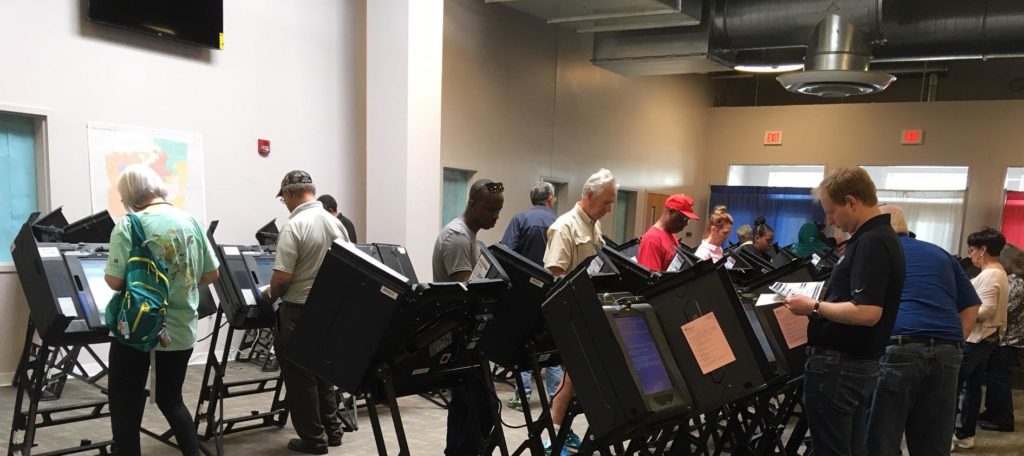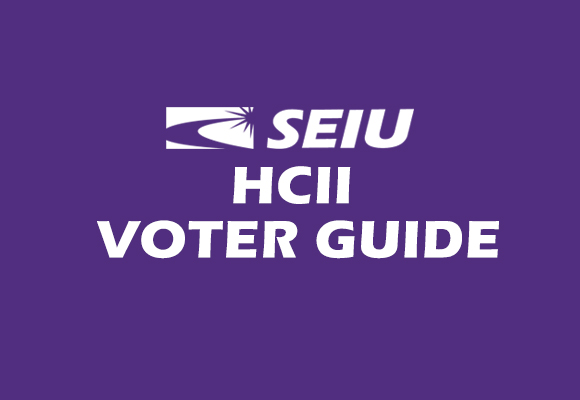IL Voters’ Rights – 5 Things You Should Know


Here are five things you should know before you go to the polls.
1) Right to Vote Free From Intimidation
Voters have the right to vote (and wait in line to vote) without anyone intimidating them, and electioneering or attempts to influence their vote in any way must occur more than 100 feet outside a polling location.
2) Right to a Secret Ballot
Your ballot will always be secret. Your choices cannot be matched up to your name – ever. Poll workers cannot ask you who you voted for.
However, it is public record whether or not you choose to vote. Make sure when someone looks up your public voting record , they can see that your voted this November.
3) Right to Assistance at the Polls
You can take voting information into the polling station. For example, you can print out who you want to vote for and take it into the booth. You could also pull that information on your phone. You can find information about candidates who support SEIU families here: https://hciivotes.civicengine.com/
Any voter who needs assistance voting is entitled to have some person of his or her choice, other than the voter’s employer, an agent of the employer, or an officer or agent of the voter’s union, mark the voter’s choices or assist the voter in marking his or her choices on the ballot. Under the federal Voting Rights Act, many jurisdictions in Illinois must provide oral and written language assistance for limited English proficient voters.
Voters with disabilities have the right to vote, including using a nonvisual ballot. Polling locations should be wheelchair accessible and offer parking for persons with disabilities. Curbside voting is also available if the voter contacts his or her local election authority beforehand; attempts should be made to obtain curbside voting even when not requested in advance.
4) Right to Vote If You’re in Line At Poll Closing
On Election Day, each polling place will be open from 6 AM to 7 PM. A voter in line at a polling place by 7 PM MUST be allowed to vote.
Find your polling location here: https://hciivotes.civicengine.com/
5) VOTING: WHEN, WHERE, AND WHO
Visit the SEIU HCII Voter Guide to find when and where you can vote in your area and which candidates are the best for SEIU Healthcare families.
Candidates endorsed by SEIU Healthcare support issues like a$15 minimum wage, affordable healthcare, and strong home care and child care programs.
Other helpful voting tips
You can register to vote or change your voting address on election day: If a voter has moved and has not updated his or her registration, the voter can generally cast a ballot but whether and what type of ballot can be cast is determined by whether the voter has time to complete Election Day Registration.
Voter ID: In general, voters do not have to provide identification at the polling place. But these voters must provide ID: (a) a voter who is using Election Day Registration (EDR); (b) a voter who is changing his/her voting address at the polling place; and (c) a first-time voter who registered by mail
and failed to submit proof of identity with the registration application. Click here to see acceptable forms of ID. One of these two IDs must list the voter’s current address.
Mistake Ballot: If a voter makes a mistake or spoils his or her ballot and has not yet cast the ballot, the voter has the right to receive a replacement ballot after returning the spoiled ballot.
Provisional ballots: Rather than using a provisional ballot, a voter should attempt to have the issue resolved, such as by completing Election Day Voter Registration or asking election judges/poll workers to have machines repaired.
A voter should be offered a provisional ballot only when:
(a) the voter’s voting status has been successfully challenged;
(b) it is the voter’s first time voting in
that precinct, she did not provide identification when registering by mail AND does not have sufficient
ID with her at the polling place;
(c) a court order extends the time for closing the polls;
(d) the voter’s name appears on the list of voters who voted during the early voting period, but the voter claims not
to have voted during the early voting period; or
(e) the voter received an absentee ballot but did not return the absentee ballot to the election authority and was unable to vote through procedures
mentioned in this section.
Other than for these reasons, the voter should be able to cast a regular ballot. A provisional ballot should be a last resort.

